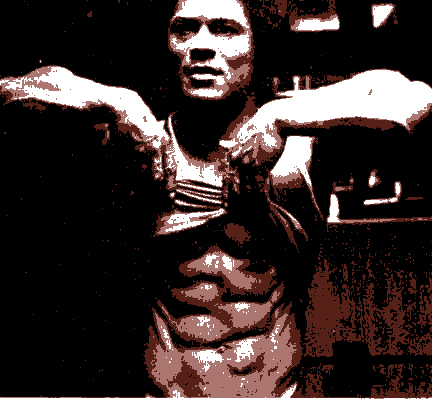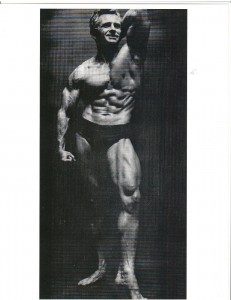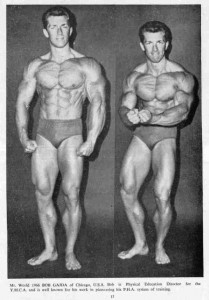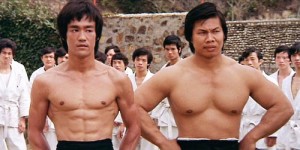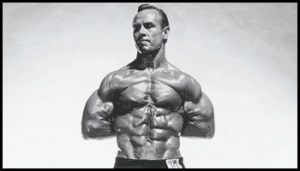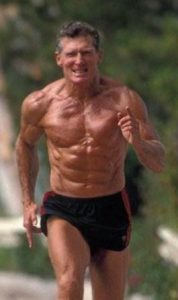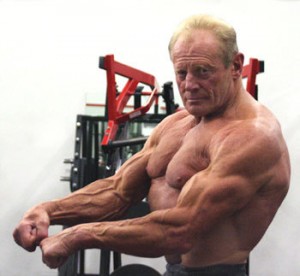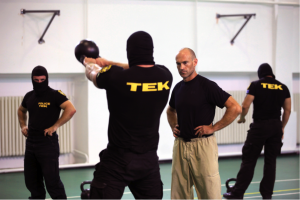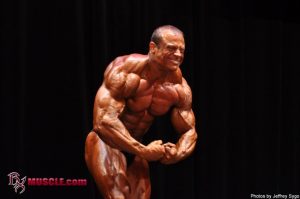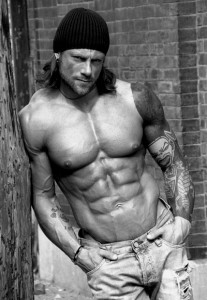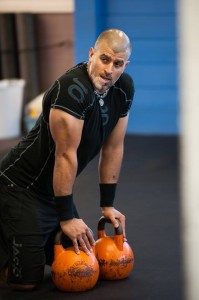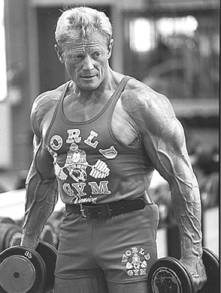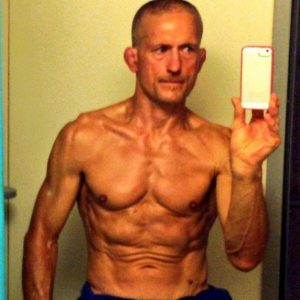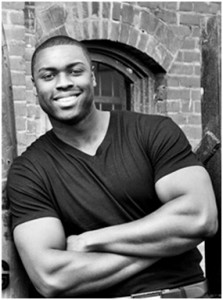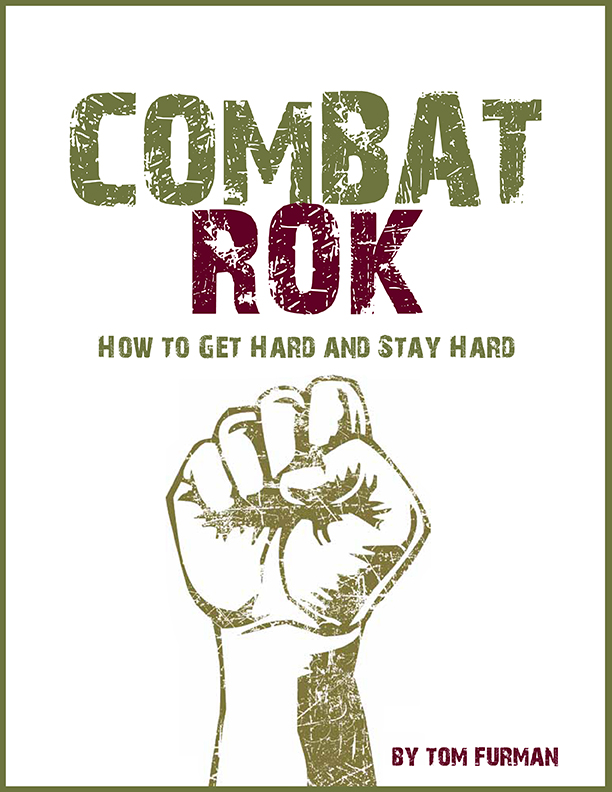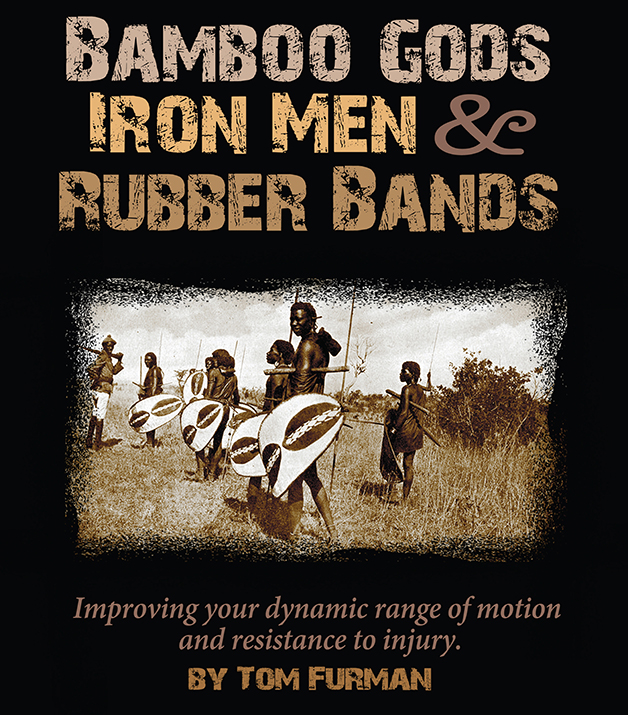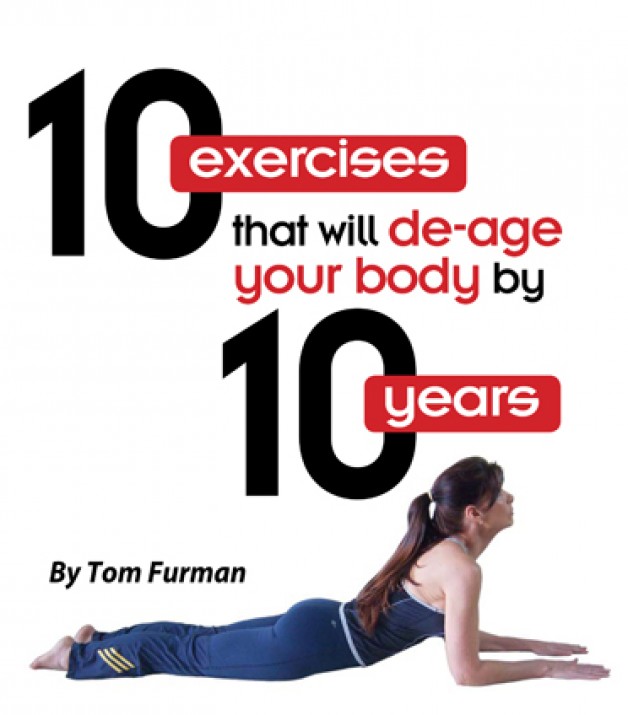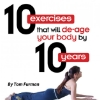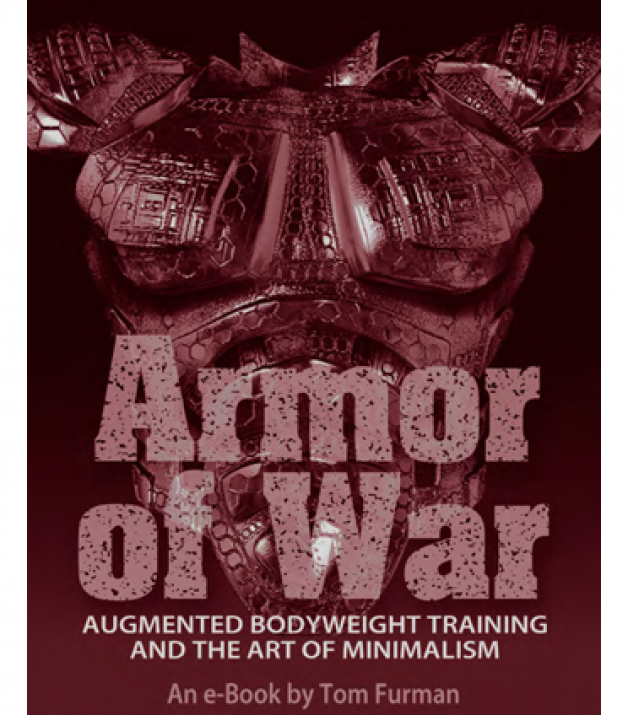There are many variables in training. Most everyone is familiar with load, volume, frequency, duration and speed, [of movement]. One variable is time. The amount of weight moved in a specific amount of time has been referred to as DENSITY. Getting more done in less time is one way to ramp up training intensity. This is not and end all and be all. It’ is NOT appropriate for those athletes training specifically for limit strength. In their case, forcing themselves to wait between sets is of utmost importance in order to get the maximum efficiency out of every set. However as I show later, using time and organization can give some unexpected benefits.
The Iron Guru, Vince Gironda referred to this protocol as, “..training over your head,..”. Basically beginning the next set when you weren’t quite ready for it. Remember, bodybuilders came to Gironda who were lifting heavy weights, with basic lifts and had ample size and strength and an insatiable appetite. He used time and weight as a means of intensity along with a very strict diet. It worked. We’ve learned a lot since that time, but for the 1960’s, this was ahead of it’s time.
With time as a variable there are several ways to set up the training. Here is an outline that is by no means complete, but simply an overview of history.
- Standard Sets. Simple measuring or limiting the rest period between sets.
- Superset. Alternating two exercises for different areas of the body.
- Compound Set. Alternating two exercises for the same are of the body.
- Tri Set. Three exercises back to back.
- Giant set. Four or more exercises chained together.
- Circuit. Doing your whole workout with limited rest.
- Metabolic Pairings. Groups of two exercises alternated.
- Cardio Circuit. Alternating a strength drill with a short cardio exercise.
- Universal Fitness/Chuck Coker. The original Universal Circuit of upper and lower alternated strength exercises.
- PHA. Peripheral Heart Action. Popularized by Mr. American, Bob Gajda. Stringing together non related exercise to peripherally move blood around the body.
In terms of results, we have history, [Appeal to Antiquity] and we have a bit of science. We can also look at how some strength/endurance athletes set up their training. Finally we can pick a study to make our point, [cherry picking].
Historically, some of the leanest, best conditioned athletes used limited rest as a strong component of their training system. Bruce Lee used basic lifts like clean and press, squat and bench for his fundamental strength work. Then he followed by alternating abdominal work with forearm work for efficiency. His workouts are reproduced all over the internet so it’s hardly news that he took advantage of this method.
Another athlete and actor, Zabo Koszewski, was never known to be out of shape. His workout, listed below was of high volume and almost ALL supersets. His appearance was a product of strict diet, genetics and his training.
| MONDAY – WEDNESDAY – FRIDAY APPROXIMATE TIME-3½ hours |
||
|---|---|---|
| LEGS & BACK | ||
| Squats | 8 x 10 | Alternating |
| Leg Curls | 8 x 10 | |
| Hack Squats | 2 x 20 | Alternating |
| Leg Curls | 2 x 20 | |
| Stiff Leg Dead Lift | 4 x 10 | |
| Power Cleans | 4 x 10 | |
| CHEST | ||
| Decline Dumbell Press | 10 reps | |
| Criss-cross on overhead pulleys | 10 reps | |
| Parallel Dips | 10 reps | |
| Push-Ups | 25 reps | |
| These exercises are done for 1 set in above sequence, 7 times around. | ||
| “LATS” | ||
| Chins | 7 x 10 | |
| Rows on Pulley | 7 x 10 | |
| Pull Downs Behind Neck on Pulley | 7 x 10 | |
| One Arm Reverse Laterals on Pulley | 7 x 10 each arm | |
| TUESDAY-THURSDAY APPROXIMATE TIME-2½ hours |
||
| “DELTS” | ||
| Seated Dumbell Presses | Alternating 7 x 10 | |
| Flys with Dumbells | ||
| Seated Press Behind Neck | 7 x 10 | |
| Upright Rows | 7 x 10 | |
| “ARMS” | ||
| Incline Curls Alternate | Alternate 20 x 10 | |
| Tricep Press Downs on Pulley | ||
| All 5 day schedule of workouts are preceded by: | ||
| Situps | 500 reps | No stopping |
| Leg Raise | 500 reps | No stopping |
SUNDAY-He does what he feels like doing in his training.
He calls this his “Goof off Day.”
If you want to go back further, John Grimek was adamant about alternating dumbbell pullovers with his leg exercises and not just the squat. He even has specific timing to the breathing between and during these sets. His success and longevity are hard to argue with.
Actor Brad Harris always kept time as a variable and supersets as a strong component of his programs. He’s 80 years old now and views circulation and the so called pump of exercise to be very health promoting. He said, “When people get older and aren’t getting enough blood flow from their activities, those little veins all shut down. That makes the heart work harder, and if it’s suddenly overworked, a heart attack is the result”.
In the photo above, Brad Harris was in his late sixties, by the way. Another example of the health giving benefits of, ‘training over your head’ is from Iron Game legend, Dave Draper. I remembered an anecdote Dave’s wife, Laree, mentioned when some of us noted the visual difference over the years when Dave moved from straight sets to super sets. Laree said,-
“Dave spent three weeks in the ICU at the onset of congestive heart failure in the early ’80s due to a decade of excessive alcohol. A couple of years after that, the cardiologist couldn’t believe the progress of Dave’s recovery and said ‘Whatever you’re doing, keep doing it.” At the time, Dave was doing what he’d always been doing, training 6 days a week, nearly always supersetting and working fast”.
As far as hard data is concerned. I pulled this study –
The metabolic costs of reciprocal supersets vs. traditional resistance exercise in young recreationally active adults.
Author information
An acute bout of traditional resistance training (TRAD) increases energy expenditure (EE) both during exercise and in the postexercise period. Reciprocal supersets (SUPERs) are a method of resistance training that alternates multiple sets of high-intensity agonist-antagonist muscle groups with limited recovery. The purpose of this study was to compare the energy cost of SUPERs and TRAD both during and in the postexercise period. We hypothesized that SUPERs would produce greater exercise EE relative to the duration of exercise time and greater excess postexercise oxygen consumption (EPOC) than TRAD of matched work. Ten recreationally active, young men each participated in 2 exercise protocols: SUPER, followed 1 week later by TRAD matched within using a 10-repetition maximum load for 6 exercises, 4 sets, and repetitions. Participants were measured for oxygen consumption and blood lactate concentration during exercise and 60 minutes postexercise after each exercise bout. No significant differences were observed in aerobic exercise EE between trials (SUPER 1,009.99 +/- 71.42 kJ; TRAD 954.49 +/- 83.31 kJ); however, when expressed relative to time, the exercise EE was significantly greater during SUPER (34.70 +/- 2.97 kJ.min) than TRAD (26.28 +/- 2.43 kJ.min). Excess postexercise oxygen consumption was significantly greater after SUPER (79.36 +/- 7.49 kJ) over TRAD (59.67 +/- 8.37 kJ). Average blood lactate measures were significantly greater during SUPER (5.1 +/- 0.9 mmol.L) than during TRAD (3.8 +/- 0.6 mmol.L). Reciprocal supersets produced greater exercise kJ.min, blood lactate, and EPOC than did TRAD. Incorporating this method of resistance exercise may benefit exercisers attempting to increase EE and have a fixed exercise volume with limited exercise time available.
One word here about EPOC. [Excess post-exercise oxygen consumption]. Don’t dwell on it. You will ALWAYS burn more calories during the workout versus some magical time period afterwards. Most people can’t train hard enough,.. especially the people who are looking for rainbows and unicorns, [obese ones]. The best explanation of this is from Lyle McDonald’s page. www.bodyrecomposition.com. Here is the specific link. EPOC-LYLE
In terms of programming, let me list a few examples. Jim Wendler for instance, invented the immensely popular and highly respected, 5/3/1 Program. This can hardly be called, frivolous, toning or trendy. However when running through the details, one should note that Jim insists or assumes that you are doing pullups in between sets of bench press. This is classic supersetting from Arnold’s day back in Gold’s Gym. Remember Arnold was benching 485 and Franco was doing 500+. Obviously something’s working. When discussing assistance exercises and posed with the question, “Are supersets OK?”.. Wendler’s response is, “Superset away!”
The “Evil Russian”, Pavel Tsatsouline of Strongfirst, insists in possibly his most popular training program, “Enter the Kettlebell”, on alternating weighted pullups with kettlebell clean and press ladders. His points are compelling and this is a book is certainly one should be on the shelf of all trainees.
One of the most innovative a successful coaches is Sergey Rudnev. He’s produced more kettlebell champions than anyone. PERIOD. His process is this – [Remember, Kettlebell Sport is an endurance sport, strength endurance]
- Practice of the competition lift. That would be jerk/snatch, [biathlon] or long cycle, [clean & jerk].
- Bodypart training. Either legs/back or shoulders-chest/upper back, SUPERSETS.
- Abdominals. SUPERSETTED
- Long Slow Distance Aerobics
- Stretching
Remember this template changes week to week and this is but one frame in a long feature film on peaking for competition. What is important is SUPERSETTING is time efficient, joint protective and creates some metabolic stress.
The last programming example is that of Matthew Kroczaleski. He is a powerlifter turned bodybuilder. This is a man who does one armed rows, epically called, “KROC ROWS” with 300 pounds. What does his arm workout look like now that he’s training for lean body mass and a thin skinfold? –
“Good pump tonight as everything was supersets and the max rest period between any of the supersets was 2 minutes. Including warm ups (which I didn’t list but consisted of several sets of band pushdowns and light barbell curls) I completed the entire session of 24 work sets in less than an hour”.
Supersets or Giant sets as reported, don’t need to be bicep/tricep, chest/back, hamstring/quads, etc. They can be big moves. This training methodology is part of what is called, Escalating Density Training that was coined by strength coach, Charles Staley. This is a quick summary of his philosophy, –
“EDT involves doing a workout, measuring how much work was done, and then consistently and gradually increasing that amount of work. When you do, muscle will grow, metabolism will increase, and you’ll have a leaner, more muscular body. Now, as it turns out, there’s a paradox at work here. Because good fatigue management strategies allow you to do a lot more work, you’ll end up plenty sore anyway, so for you masochists out there, fear not — you’ll be in plenty of pain”. [For the article that started it all,.. go here- EDT ]
One variable is Lane Bryce’s 50/20 Program or “Having It All”. This blog post is a good summation of his variation. It’s a great capsulization. 50/20
Another perspective is that of Caveman Training. This was from the poster, “Caveman” on the forums of T-Nation. His training goes thus-
“When it’s EDT style I do one day one off and every 3 weeks take a full weekend off (those workouts take me like 45 mins, HST I have managed to do under 40 mins. OK, few numbers, bare in mind that I work mostly supersets with 2 compound movements, kinda EDT way but for 4-6 sets. So yesterday the first SS was squat and inclined bench, in both I go for 7-8 reps, using 330 for squat and 240 for the incline bench. With that I did 5 SS with 30 secs rests in between. Next was alternate lunges with 220 (7 reps each leg in an alternate way, thats 14 in a row) and BB row with that same weight, also for 7 reps. With that i did 4 SS, had my shake and got out of there in some 40 minutes all together. When I deadlift with this kind of workout, weight is around 370-400, mixed with standing shoulder press, using my legs too, with 210-200. That SS is a killer, almost to faint after the last reps.
Those are the movements I care about, all others I just go for it.
Hi, some days ago I was asked about getting really lean, lets say 6-5%. Well, my approaches usually have HIIT or some kind of cardio or whatever you want to call it, till Im around 10%. Starting then I do no more of that and just handle my diet and workouts, I use things like Fat to Fire , any of the Meltdowns or EDTs, and make small changes, like exercises, TUL and rep range. That is, I use mostly compound moves, as almost always, heavy weights, low reps (5-7) and very short rest intervals.
One thing that has worked is the 45 min barrier, whatever workout Im using I finish at most in 45 min, If Im not done yet, I still cut it and go home. That way Ive noticed I can keep the most lean tissue when going on low calorie diets. Food, I eat around 2.5 grams of protein per BW and the rest are almost 50/50 carbs and fats.How many calories? I change them every 2 weeks, like 300 less for 2 weeks, then back to mantainance and then 500 less and so on, till I get to the fat% I want. Carbs I only eat during and right after working out and fats are spread in the 2-3 last feedings of the day.
Besides Deadlift/Overhead Press, and Squat/ Row,
I also like doing deads or snatch / DB Overhead press, squat/chest press, chest press/rows, chins or pullups / overhead press, lunges / any upper body Im missing that workout. As you can see, its either a full(lower) body / upper body combo, used both in strength and fat loss stages or an agonist / antagonist combo (when going for some mass). Secondary stuff I train for about 3 supersets or 4 exercises circuits, same range of reps than the big ones. You can be creative here, just start trying combos, sets, rep ranges etc etc
Don’t dare thinking that 5reps with a 10RM for 15 mins is not enough, cause I did, and at the end I wasn’t able to stand straight to back my thoughts. I loaded the bar with more weight than advised and was only able to get about 7 sets.
Do your reps 1030 (TUL)and you will be really feeling the difference. Another thing thats worked for me is going for 8 instead of 5 reps but only for 12 mins. Try changing reps, time or weight but only slightly or it will crash you.
This training will boost your strength-resistance in ways you didnt thought possible. I like a lot CPT+EDT, using one olympic lifting like snatches, clean-jerk or may be a powerlifting move as a first exercise and go for 5×5 or 3x5sets (I like the latter) and then 2 PRs of EDT of compound movements and finally 1PR of auxiliary exercises for the Bcps, Trcps or Shoulders. “
The last variable in EDT is to use kettlebells as a means of resistance and rugged development. Kettlebell pioneer, Mike Mahler, long ago saw the efficiency of this fitness recipe. You can see his expression of that methodology, HERE.
So as a summary, there is no magic and if you are looking for some magical effect, you won’t find it. There are only so many variables and playing with those variables allows you to end up with different outcomes. Training over your head can simply be racing through your workout, but hopefully not getting impaired kidneys by “RXing your WOD”. It can mean efficiently alternating exercises that increase energy expenditure and also keep injuries at bay. It can also be a means of increasing work capacity and improving conditioning. Here are some resources specific to individual areas. [EDT sources are above].
First is the mentor to us all, Dave Draper. His Iron Online resource is beyond measure. Fundamentally, when Dave speaks, we listen. Here is his take on supersetting. — http://www.davedraper.com/superset-training.html
This is a wonderful article by Steve Maxwell on metabolic conditioning and circuits. Steve is a valuable resource. Be glad he is so free with his knowledge! — http://www.maxwellsc.com/blog.cfm?blogID=55 [ A GREAT article!]
Lastly is strength coach Lee Boyce. After reviewing the idea of supersets and his knowledge of body integrity, Lee wrote an article that outlines both risk and effectiveness of pairing different exercises together while, “training over your head”. This is very thought provoking and certainly worth the read. Check it out here —
http://www.t-nation.com/free_online_article/most_recent/making_sense_of_supersets
So there you have it. Add time as a variable, measure it and use it as a form of increasing intensity. This method is not about limit strength but about doing more work in a given time. If anything it’s efficient, is orthopedically friendly and produces results that have a track record.

